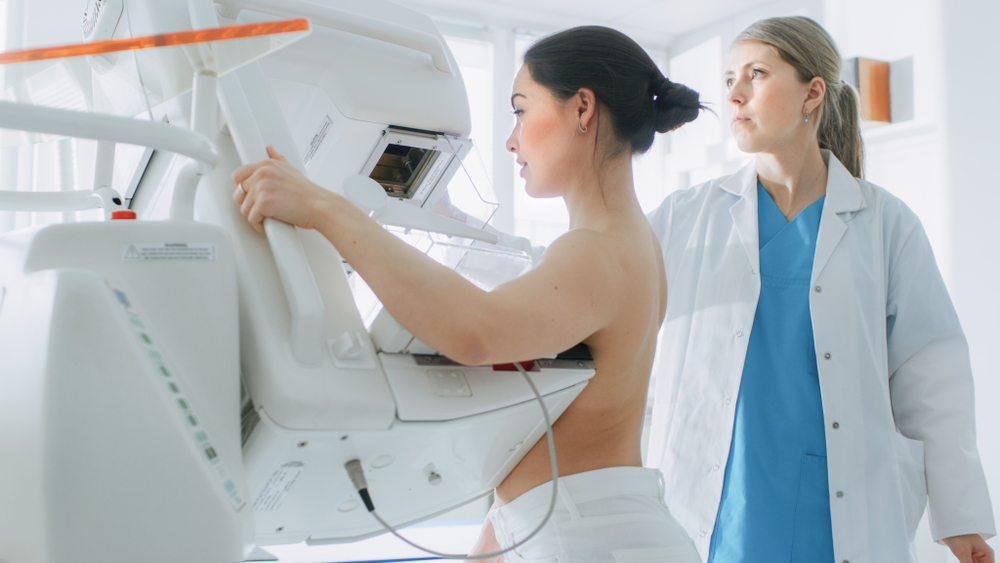Having dense breast tissue is common, but many people don’t fully understand what it means or why it’s significant. Understanding this characteristic is important for interpreting your mammogram results and making informed decisions about your care.
Understanding Dense Breast Tissue
Breast density refers to the amount of fibrous and glandular tissue compared to fatty tissue in your breasts, and it’s something only a mammogram can determine. This characteristic is determined through imaging like mammograms and can have an impact on how breast cancer is detected. Let’s break it down further.
Definition and Characteristics
Dense breast tissue is unrelated to breast size, shape, or firmness. Having dense breasts simply means there is more fibrous and glandular tissue compared to fatty tissue in the breasts. This is something identified only through a mammogram—it’s not visible or something you can feel. Breast density is typically defined in 4 categories:
- Almost entirely fatty – Minimal dense tissue, mostly fatty.
- Scattered areas of density – Small amounts of dense tissue spread throughout.
- Heterogeneously dense – Significant dense tissue that could obscure small masses on a mammogram.
- Extremely dense – High levels of dense tissue, making it harder to spot abnormalities on imaging.
Implications of Extremely Dense Breasts
Breast density is a natural variation and not an indicator of any abnormalities on its own, but having extremely dense breasts can complicate breast cancer screening and impact your breast cancer risk.
Health Risks and Challenges
Researchers are still studying the connection between breast density and breast cancer risk. Experts believe the increased cancer risk for those with dense breasts is due one or more of the following associated with breast density:
- Hormonal factors
- Genetics
- Increased likelihood of cell growth in denser tissue
Impact on Mammogram Accuracy
Mammograms are one of the most effective tools for breast cancer screening, but dense breast tissue can obscure potential abnormalities. This is why supplemental screening methods are often recommended for women with extremely dense breasts to ensure more thorough detection.
Why Dense Tissue Affects Screening
Dense breast tissue appears white on a mammogram—the same color as tumors. This overlap makes it harder for radiologists to detect small or subtle changes, potentially delaying diagnosis. In some cases, this can lead to additional imaging, false positives, or even missed findings.
Additional Screening and Diagnostic Options
To ensure accurate results for women with dense breasts, doctors may recommend additional imaging methods tailored to individual needs.
Alternatives to Mammograms
If you have dense breast tissue, your doctor might suggest these additional imaging tests can provide clearer and more accurate results:
- Breast Ultrasound: Uses sound waves to create detailed images of breast tissue, which is especially helpful for identifying issues not visible on a mammogram.
- Breast MRI: Provides highly detailed imaging and is often used for women with dense breasts and other high-risk factors, such as a family history of breast cancer.
- 3D Mammography (Tomosynthesis): Offers layered imaging, which reduces false positives and increases the likelihood of catching abnormalities in dense breast tissue.
Managing and Monitoring Dense Breasts
If you’ve been told you have extremely dense breasts, there are steps you can take to stay on top of your breast health:
- Talk to Your Doctor: Discuss your breast density and whether supplemental screening is recommended.
- Understand Your Risks: Know your family history and discuss any genetic testing options that might help assess your risk further.
- Stay Consistent: Schedule regular mammograms and follow through with any additional testing as advised.
- Stay Informed: Learn about new advancements in breast imaging technology that may improve detection rates for dense breast tissue.
Take Charge Of Your Health
While having dense breasts can make screening more challenging, staying informed and proactive ensures that you can catch potential problems early and improve outcomes. Follow our women’s health blog for more information on breast density, breast cancer screening, and other crucial health topics.
Resources:
- https://www.mayoclinic.org/tests-procedures/mammogram/in-depth/dense-breast-tissue/art-20123968?utm_source=chatgpt.com
- https://my.clevelandclinic.org/health/articles/21169-dense-breast-tissue?utm_source=chatgpt.com
- https://www.cancer.gov/types/breast/breast-changes/dense-breasts?utm_source=chatgpt.com
- https://www.cdc.gov/breast-cancer/about/dense-breasts.html?utm_source=chatgpt.com
- https://www.hopkinsmedicine.org/health/conditions-and-diseases/my-doctor-says-i-have-dense-breasts?utm_source=chatgpt.com

























![monitoring breast density shutterstock_1299510538-[Converted]](https://magview.com/wp-content/uploads/2023/05/shutterstock_1299510538-Converted.jpg)





















